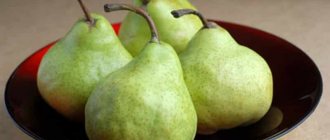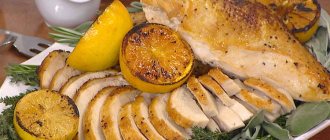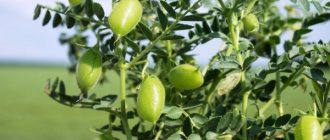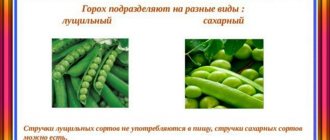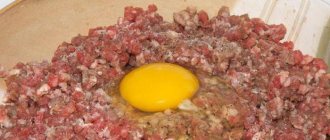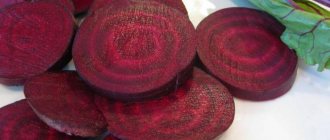Healthy eating means eating not only tasty and satisfying foods, but also healthy foods. Peas fully meet these requirements. This culture contains a number of elements valuable to the body, which determine its beneficial properties. Peas are recommended for all categories of people, especially useful for pregnant women. Despite its relatively high calorie content, it is widely used in dietary nutrition. There are also a number of contraindications in which the use of the culture is prohibited or limited.
Boiled peas: calorie content and nutritional value
According to classification, there are three types of plants such as peas. Its calorie content, as well as beneficial properties, are determined by its membership in a certain group.
In shelling peas, the peas themselves have a regular round shape; the leaves become hard when ripe. For long-term storage, whole peas are dried. The calorie content of such a product is quite high - from 298 to 311 kcal per 100 g of dry grains. An analysis of the energy value of peas shows that out of 298 kcal, proteins account for 82 kcal, fats – 18 kcal, and carbohydrates – 198 kcal. Table pea varieties are usually used for making soups, porridges or purees, and side dishes. Boiled shelling peas have a low calorie content in purees or soups, only 60 kcal, but they are rich in protein and are excellent for dietary nutrition.
Unlike shelled varieties, sugar snap peas value underdeveloped grains with a high moisture content. The beans of such peas are sweet in taste and fleshy, but during the drying process they wrinkle.
When ripening, brain peas change their round shape and wrinkle, resembling the brain membrane. These varieties are rich in sucrose, sweet in taste, and are used for canning. They are not suitable for heat treatment, although they have the lowest calorie content of all pea varieties.
Application
For cooking, you can use both fresh and dried peas. Fresh peas are available for a very limited period, so dried peas are more often used in cooking. To prepare soups, peas must first be soaked for 4-6 hours, preferably overnight. During cooking, the peas increase in size several times and form foam that needs to be skimmed off. Cook the peas until softened, about 1-2 hours. It’s better to add salt at the end - unleavened peas cook faster.
Latest forum topics on our website
- Bonnita / Which is better - chemical peeling or laser?
- Yulia-78 / Are there any results from mesotherapy?
- QueenMargo / What cream covers dark circles under the eyes???
Other articles in this section
| Artichoke Artichoke is a vegetable plant of the Asteraceae family. Its homeland is the Mediterranean region, where the healing properties of the artichoke have been known for several thousand years. Distributed in Southern Europe, North Africa and the Canary Islands. The artichoke is a scaly bud 6-10 cm in diameter, weighing about 150 g. The most delicious part is the core, which is hidden under the petals. |
| Leeks Leeks have been known for their medicinal properties for centuries, although nowadays they are used mainly in cooking. This is a herbaceous plant of the onion family. Leeks have a pungent taste, although less pronounced than that of onions. The light green stems and white onion are eaten. Dark green leaves are more fibrous but contain more vitamins and can be used to make juice. |
| Ramson is a perennial plant similar to onions and reproduces by bulb. The stems are long and triangular with a distinctive garlic scent. Blooms from May to June, white star-shaped flowers. The stems, leaves and bulbs of the plant are used for food. Ramson is a wild plant; the leaves are collected in the spring, before flowering. The taste is reminiscent of onion and garlic greens. |
| Boiled beets Beetroot is a unique source of betalain alkaloids. It is they who give the root crop its purplish-red color. Unlike anthocyanins, which give a dark purple color, betalains are destroyed by heat treatment. This explains why beets turn pale during cooking. |
| Soybeans (sprouts) Sprouted soybeans are quite often used in cooking, especially in American cuisine. The homeland of soybeans is in Asia. In ancient times, fields were sown with soybeans for crop rotation. Soybean sprouts contain several times more nutrients than seeds. This nutritional value lasts only a few days, as the sprout then develops into an adult plant. It is worth noting that only organic soybean sprouts without genetic modifications can bring real benefits. |
| Savoy cabbage Savoy cabbage is more similar to white cabbage, only the leaves of white cabbage have a smooth surface, while Savoy cabbage has a corrugated surface. Savoy cabbage has a more delicate taste and aroma; the leaves do not have thick, coarse veins, like white cabbage. Like other cruciferous vegetables, it contains many nutrients, especially glucosinolates. The name of this type of cabbage comes from the Italian county of Savoy, where it was first grown. |
| Pak choi cabbage Pak choi cabbage is a leafy vegetable from the cruciferous family. It is widespread in Asian countries, where it has been grown for more than one and a half thousand years. Translated from Chinese, the name means “white vegetable”, so it is sometimes called white or Chinese cabbage. |
| Zucchini The homeland of zucchini is considered to be Central America and Mexico, from where this vegetable was brought to Europe in the 17th century and then spread throughout the world. The shape of the fruit resembles a cucumber, but is larger - mature zucchini reaches 70-80 cm. The most delicious are young zucchini up to 20 cm in size, with more delicate skin and pulp. |
| Romaine lettuce Romaine lettuce, or romaine, has been cultivated since ancient times. Also sometimes called cos salad. Its homeland is in the eastern Mediterranean. From the 5th century n. e. Romaine lettuce began to be grown in China. There it was considered a symbol of good luck. Romano was served on the table on holidays - New Year, birthdays. It differs from lettuce in having larger, dark green leaves with a crunchy texture. |
| Black radish Since ancient times, black radish has been used in Asian countries to treat various diseases. In Europe, this vegetable is not so popular and became known only in the second half of the twentieth century. The plant is completely edible, including the tops and seeds. Black radish benefits the entire body; it is a valuable source of vital substances. |
Dried peas are rich in vitamins B, A and ascorbic acid. It contains a lot of iron, phosphorus, calcium, potassium, zinc, magnesium.
The calorie content of peas boiled in water per 100 grams is 59.8 kcal. In 100 g of product:
- 5.9 g protein;
- 0 g fat;
- 9.1 g carbohydrates.
Boiled peas are enriched with vitamins B, A, E, C, PP, minerals sulfur, magnesium, potassium, iodine, sodium, calcium, chlorine. Regular consumption of such dishes normalizes the functioning of the heart and blood vessels, accelerates metabolism, lowers blood pressure, reduces cholesterol in the blood, and cleanses the intestines of toxins.
Dietary dish: boiled peas, calorie content and benefits
Peas are often called the “king of grains” for their rich composition: a whole range of B vitamins, vitamins A and C, PP and E. The amount of minerals in peas is very high: calcium and potassium, phosphorus, magnesium, iron, iodine, selenium, sulfur , chlorine and others. The annual plant contains important amino acids, pyridoxine, many enzymes, and fiber. As the peas ripen, glucose turns into starch. Pea dishes are good for dietary nutrition, as well as for those who observe religious fasts.
Research by Canadian scientists has confirmed that vegetable pea protein is highly digestible, is an excellent alternative to meat, has a positive effect on the functioning of the heart and blood vessels, normalizes blood pressure, and eliminates swelling. Boiled peas, the calorie content of which can be a pleasant surprise for those losing weight, serve as an excellent hearty dish during the period of active weight loss. Boiled peas are also useful for people suffering from anemia and kidney problems, problems with the gastrointestinal tract (constipation, heartburn, and other disorders). What else is valuable about boiled peas? The calorie content and beneficial properties of this “king of the legume family” can prevent problems with the thyroid gland (goiter), atherosclerosis and obesity. In addition, boiled peas restore metabolism and relieve headaches.

What happens to peas during cooking?
Amazing product - peas! During heat treatment, it significantly loses its calorie content, but at the same time retains all its healing properties! So, for example, if you boil crushed peas, you can get 115 kcal per 100 g of the finished product, green peas - 160 kcal, in pea soup - 60-66 kcal. But if you add additional components to boiled peas, what calorie content will you get? The same pea soup with fried onions will give a total of 73 kcal, and if you add smoked meats to this dish - 103 kcal. The energy value of pea puree will also differ if it is enriched with various goodies. In its pure form, pea porridge (puree) without additives – 60 kcal, with butter – 103 kcal, and with mushrooms (champignons) – 140 kcal!
How to cook peas correctly
Recommendations for preparing boiled peas may vary depending on the variety of beans and lentils, as well as the method of pre-processing them. Whole pea grains cannot be cooked without soaking, so you need to fill them with double the volume of water and leave overnight (6-12 hours). The higher the temperature in the room where the peas are infused, the shorter the time period should be, since split and whole peas have the ability to oxidize when left in water for a long time. Therefore, in Eastern culture there are several secrets for cooking whole or split peas without soaking.
One of the recipes states that you can add 1 tsp to a five-liter pan. baking soda (without a “slide”), then the product will boil easily. In another recipe, pour a small amount of water over the washed peas and put on the fire; when it boils, add ice water. The difference in temperature causes the peas to burst. It turns out soft boiled peas. The calorie content per 100 grams of such a dish is 60 kcal; salt can be added only at the end of cooking. Chopped peas, crushed, do not need to be soaked, but they cook for a long time, about an hour.
For ease of preparation, modern manufacturers present crushed peas, steamed. This product will be ready in 35-40 minutes. It is often cooked packaged in bags, which brings additional comfort, since the boiled pea mass does not settle to the bottom and does not burn. For the same reason, any variety of peas is cooked over low heat in a thick-walled container, with frequent stirring.

Beneficial features
The rich chemical composition determines the following beneficial properties of the product:
- removing excess fluid from the body, relieving swelling;
- combating the consequences of anemia;
- elimination of constipation, normalization of the functioning of the gastrointestinal tract;
- treatment of eczema and other skin diseases;
- lowering blood cholesterol levels;
- eliminating the risk of developing iodine deficiency in the fetus;
- prevention of asthma, elimination of complications during attacks;
- assistance in the treatment of oncology, tuberculosis;
- restoration of visual acuity, relieving eye fatigue;
- eliminating heartburn.
For men
Peas have a positive effect on the prostate. In turn, this has a beneficial effect on the functioning of the entire genitourinary system. Consumption of the culture can increase potency and stimulate sexual activity. Due to folic acid, it is possible to increase the number and quality of sperm.
Due to its nutritional value and satiety, the product is recommended for strength sports and heavy physical work.
Peas stimulate muscle function and accelerate the growth of muscle mass.
For women
One of the most important components of the product for women is folic acid. This element slows down the aging process of the body and is responsible for the normal condition and functioning of female organs.
Peas have a positive effect on the condition of the skin. This effect can be achieved through comprehensive cleansing of the body and solving various skin problems.
The product is able to saturate the body with vital hemoglobin. This is especially important during the menstrual cycle, when the content of this substance in the blood drops to critical levels.
Peas contain a large amount of vitamins, proteins and amino acids, which makes the product almost indispensable for expectant mothers. The culture allows you to normalize blood pressure and lower cholesterol levels.
Other beneficial properties for expectant mothers:
- Vitamin C helps strengthen the body's defenses;
- folic acid can significantly reduce the risk of developing fetal defects during pregnancy;
- Calcium contained in peas is necessary for the formation and strengthening of the baby’s skeletal system, as well as for improving the condition of the mother’s body.
The product helps you fall asleep more firmly and quickly, fights insomnia and sleep disorders, which are often found in pregnant women.
At the same time, peas belong to the category of heavy foods, as a result of which expectant mothers are not recommended to consume them in dry form. The culture must first be soaked in cool water and washed thoroughly - only after that it becomes suitable for consumption.
A few days before giving birth, expectant mothers should stop taking peas. This is due to the fact that the product causes increased gas formation in the intestines. For the same reason, peas are not recommended for consumption throughout the entire period of breastfeeding.
For children
In terms of protein content, peas are comparable to beef, which makes the product an important component of baby nutrition. At the same time, the protein contained in the culture is quickly absorbed by the child’s body.
Another important ingredient is thiamine. This substance has the following positive effects on the child’s body:
- activates the growth of the child;
- increases appetite;
- accelerates the development of the muscular system;
- saturates the body with energy.
Peas contain significant amounts of vitamin C, which helps strengthen the immune system and protect against respiratory diseases.
Pea porridge is especially useful for schoolchildren. Thanks to its use, it is possible to increase concentration, improve memory and vision.
How to make boiled peas tastier?
If you pour boiled peas with meat, mushroom or vegetable broth, its calorie content will increase slightly, but the dish will be more nutritious. Peas cooked in large quantities are especially aromatic and tasty. The more porridge and cabbage soup is prepared at the same time, the better the taste of the dishes will be. Also, peas turn out faster and softer when cooking them with butter or vegetable oil (a small amount). Milk gives peas a delicate taste if you add them to the water during cooking. An excellent puree is made from green peas. It does not contain a starchy aftertaste, but becomes tender and melts in the mouth. Freshly frozen peas, which can often be found in our supermarkets, do not need to be defrosted. It is ready for heat treatment. Young pods are placed in boiling unsalted water, and salt is added to taste at the very end of cooking, when the peas become soft.

Features of the pea diet
The advantages of including boiled peas and various dishes made from them in the daily diet of those people who want to lose weight are:
- good tolerance;
- lack of hunger;
- preservation of muscle tissue;
- variety of additional ingredients;
- balanced diet;
- availability of legumes;
- cleansing effect;
- improvement of metabolism.

Contraindications
In some cases, peas are harmful. For those who suffer from flatulence or bloating, doctors do not recommend eating beans. In extreme cases, you can use it with fennel, which eliminates gas formation.
Nursing mothers should limit their consumption of pea dishes.
The fact is that it contains a large amount of coarse tissue, which leads to the formation of gases in babies fed on mother's breast milk. During lactation, you need to check what the baby’s reaction to pea dishes will be and, if the reaction is positive, gradually introduce them into the diet of the nursing mother.
Dry peas should not be eaten by people with inflammatory processes in the stomach or circulatory disorders. It should also not be used for gout, as well as for pancreatitis during the acute phase and for gastritis.

